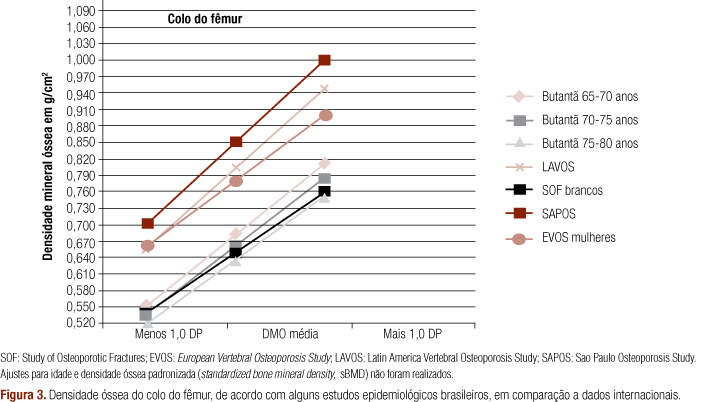Genetic and racial background, body composition, bone mineral density (BMD), diet, physical activity and life style help to explain the wide difference observed in the world prevalence and incidence of osteoporosis. Recently, a fracture assessment tool, named FRAX TM, was developed to integrate clinical risk factors (genetic and environmental conditions) and BMD, in order to quantify the ten-year probability of an osteoporotic fracture. Shortly, it will be used to indicate treatment for high risk patients. However, this tool is now available only to those populations with known reliable and prospective epidemiologic data of the osteoporotic fractures - fact that does not include the Brazilian population. The aim of this paper was to review the main national and international epidemiologic studies to better understand the differences between the clinical risk factors, BMD and fracture probability of these populations. The authors concluded that, to use the FRAX TM tool, it is necessary more epidemiological data that could characterize the Brazilian population. The future studies should be prospective, evaluate the quality of life, mortality and morbidity after a fracture, as well the life expectancy of the population and the cost-effectiveness and utility related to the osteoporotic fracture. In fact, it is not recommended to use any of the populations available in the FRAX TM tool, as a substitute for the Brazilian population.
Osteoporosis; fracture; epidemiology; FRAX TM; bone density









